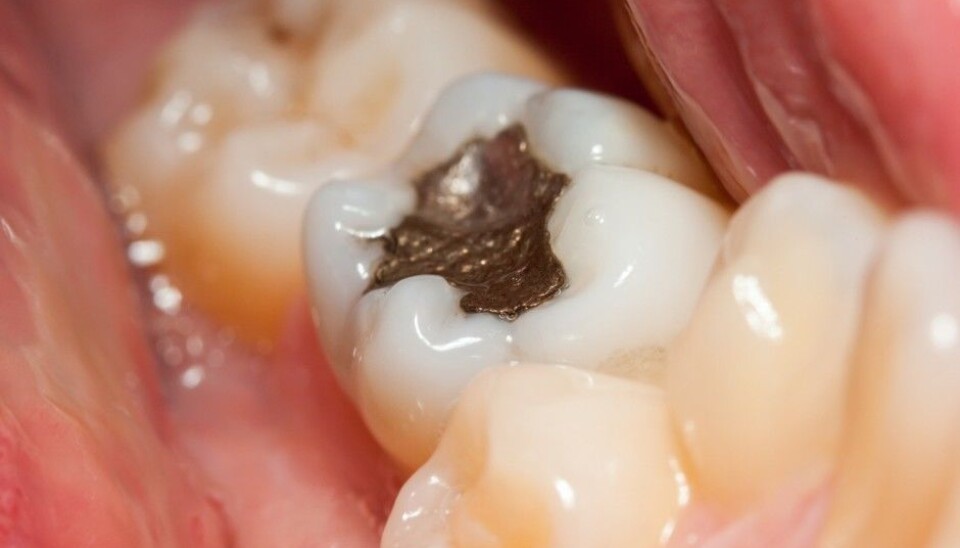
Are mercury dental fillings really that dangerous?
If mercury is unhealthy for us to eat in fish, why is it okay for it to be in dental amalgam in our mouths?
Ten years ago, Norway banned the use of mercury amalgam as dental fillings. But what about all of us who are still walking around with teeth full of the stuff?
Amalgam is an alloy of mercury mixed with other metals. Mercury is what makes the mixture soft enough for it to mold to the hole from your cavity before it stiffens and becomes a part of your tooth.
The ban on amalgam enacted 10 years ago was part of a general ban on the use and import of toxic mercury.
So should we worry? Should people with mouths full of mercury amalgam have a blood test to check the mercury levels in their blood?
It is definitely possible to measure mercury levels in both blood and urine, but it may not tell us very much, says Professor Morten Rykke at the University of Oslo.
"This kind of test does not really give us any information about the effect of amalgam fillings," Rykke, a professor of dentistry, says.
Mercury in the food
If you have a lot of mercury in your blood, it's almost certainly due to the food you're eating. Fish and seafood contain mercury, and the higher up the food chain the fish is, the higher the mercury levels in its flesh.
That’s why the Norwegian Institute of Public Health recommends that pregnant and breastfeeding women avoid eating pike, perch over 25 centimeters, trout or Arctic char over one kilo, blue whiting over three kilos, fresh tuna, shark, skate and other "exotic" fish species, as they call them.
Nevertheless, "if you get a blood test, you will only find out how much mercury you’ve been exposed to from all other sources," and not from your dental amalgam, says Rykke.
If you’re still worried ...
A 2016 report from the Norwegian Institute of Public Health found few direct health consequences when researchers compared people with amalgam to people with modern plastic fillings. They did find that mercury levels in urine were slightly higher in the amalgam group.
For that reason, "if you don’t have any health problems from your amalgam fillings, then it's best to leave them in your mouth," says researcher Lars Björkman at Uni Research in Bergen.
Björkman is principal researcher at Uni Research Health’s Dental Biomaterials Adverse Reaction Unit. He and his colleagues follow reports on side effects from dental treatments.
Was it amalgam or worry that caused problems?
"Some people have had worrisome health problems and have wondered what the cause of their problems is," says Björkman.
Some of these individuals have had their amalgam fillings removed. Researchers have followed what happened with the patients afterwards.
"Patients who replaced their amalgam fillings had lower intensities of general health problems after the replacement than those who did not have their fillings removed," Björkman said.
He thinks this is an interesting and important finding, but emphasizes that it doesn’t mean everyone should run to the dentist. The study included only 40 people, and everyone in the study already thought that amalgam was the cause of their health problems.
Impossible to do a causal study
It’s not possible to do a study like this as a “blind” study, which would help researchers know if the amalgam removal was actually the cause of the improvements.
A blind study would divide the group in two, where one group would be treated and the other group would receive a fake treatment. That way researchers would be able to see if the fillings were the problem or if it was just the patient’s belief that the amalgam was the cause of their problem.
A study like this can’t be blind because is impossible to pretend that dental fillings have been removed.
Björkman and colleagues are now embarking on a more comprehensive study, but it will also have the same limitation.
Satisfied with the prohibition
It is now ten years since the amalgam ban came into force, but use of amalgam had already dropped before the ban. One reason? Cosmetic.
"Most people would rather have a white plastic filling in their mouth than a black plum," says Björkman.
"Amalgam was not an ideal filler material," says Rykke, without any trace of nostalgia.
But the plastic materials used today aren’t perfect, either.
“Plastic fillings can also cause allergic reactions. There are pros and cons for everything,” says Rykke.
Sweden has also banned amalgam, but it remains in use in many other countries, including the United States. In these cases, there is no evidence that amalgam is linked with greater health problems, Björkman says.
"In large populations, people with a lot of amalgam do not have more health problems than those who don’t," says Björkman.
——————————————————-
Read the Norwegian version of this article at forskning.no.
































